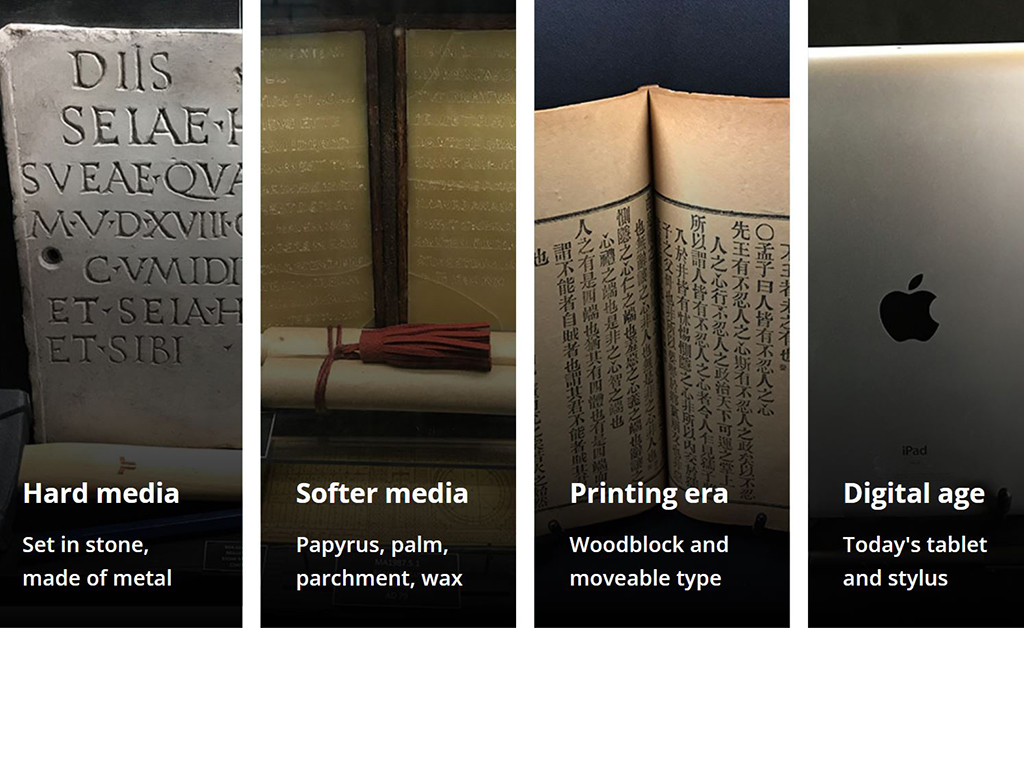Publications
2022 Journal Article
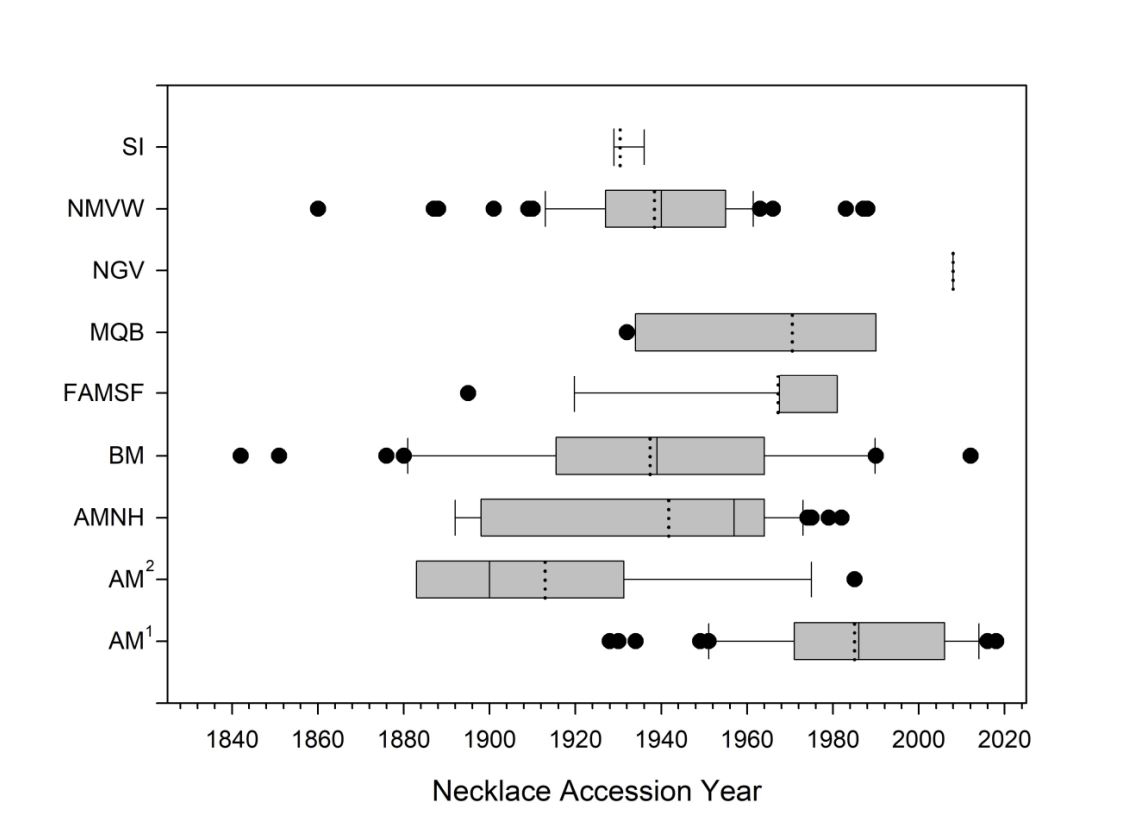
Hamilton, A. & Hopwood, B., “Online Museum Collections as Artifacts: A Case Study of New Guinean Necklaces Illustrating Mathematical Approaches as Diagnostics for Collections Management,” Collections, 18.3 (2022) 407-425.
Mathematical approaches assessing similarity in terms of culture, geography, and zoological components were applied to nine online collections of New Guinean necklaces. When mapped in multidimensional space for peoples, no strong clustering of collections was found, and for provinces two collections formed a distinct cluster from the rest. In zoological space there was no clustering, but one collection occupied a distinctly separate space. A highly significant (p < .001) effect of collection on the zoological species richness was found. There were significant differences (p < .05) in zoological entropy between several collections, and a degree of uncertainty or surprise in the zoological composition of the necklace collections. The processes behind such patterns are likely complex, and may reflect issues of funding, unconscious bias, and colonial or missionary histories. The methods explored provide diagnostic tools useful for testing the underlying structures and bias of collections.
2022 Report
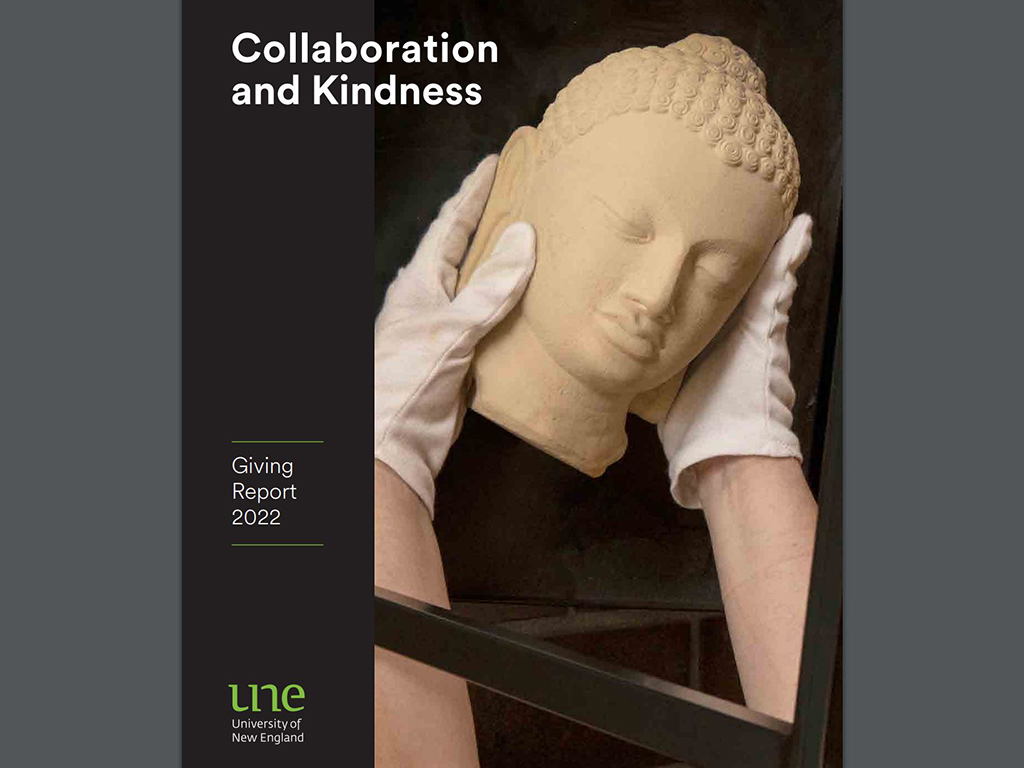
“Gifts of Global Significance,” in UNE Office of Advancement, Giving Report 2022: Collaboration and Kindness, University of New England, Armidale 2022, 32-35.
https://www.une.edu.au/__data/assets/pdf_file/0003/438267/2022-Giving-Report.pdf
UNE’s Museum of Antiquities (UNEMA) has relied on generous donors to acquire a world-class collection throughout its 62-year history. And the artefacts gifted by former TAFE teacher, grazier and Peace Corps member Bruce Reuman are a notable case in point
2021 Journal Article
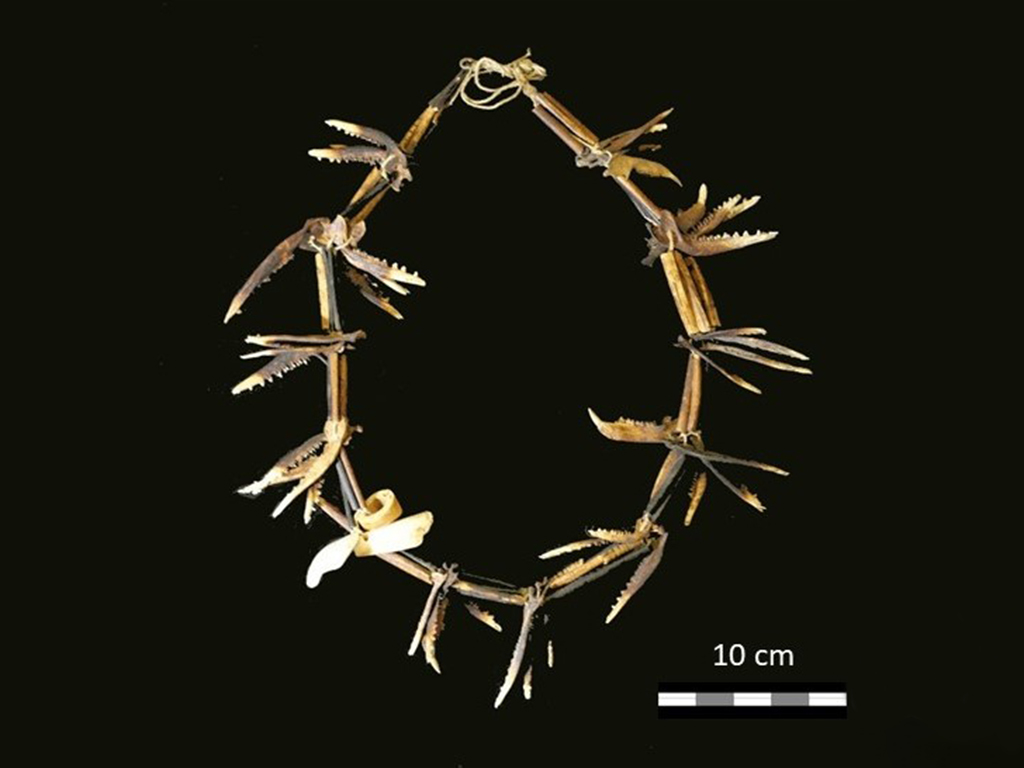
Hamilton, A. & Hopwood, B., “A highly species-rich jaw-bone artefact from New Guinea,” Archaeological and Anthropological Sciences 13 (2021) 89.
An unusual jaw-bone artefact from the north-western lowlands, West Sepik Province, Papua New Guinea, is described. It comprises 11 clusters of jawbones as well as a pendant of shell and a ring of bone. The clusters are separated by crab legs, and the entire assemblage is threaded on string. Ten of the clusters have four marsupial dentaries each, and one has three. One cluster also hosts a snake mandible, and another the mandible of an unidentified reptile. The marsupial species identified are Echymipera rufescens, Echymipera clara, Phalangista naudicaudatus, Pseudochirulus canescens and Pseudochirulus canescens. A model based on the Second (or Area) Moment of Inertia suggests that the ring of bone might be from a human tibia or fibula. While the artefact was accessioned as a necklace, it might in fact be a waist-band. With so many jaws of different species, the artefact differs markedly from other readily identifiable necklaces and girdles.
2020 Journal Article

Watson, P., “Collections and Connections: Museum of Antiquities links between Sydney and Armidale,” TAASA 29.4 (2020) 25.
The symbiotic relationship which exits between the antiquities museums of the Universities of Sydney (USyd) and New England, Armidale NSW (UNE) reflects a web of personal connections, curious collecting pathways and serendipitous outcomes. UNE was originally established as a regional college of USyd in 1938, becoming autonomous in 1954. By 1959 an enthusiastic Classics lecturer, Maurice Kelly, established the Classics Department Museum, later the UNE Museum of Antiquities (UNEMA). He was keen to enhance teaching and research through practical exposure to real objects.
2019 NTRO Curated Festival

Hopwood, B., Koehn, C., & Bourke, G., Collaborative Festival Event for the 40th Annual Conference of the Australasian Society for Classical Studies, 50th Anniversary of the Australian Academy of the Humanities, and 60th Anniversary of the UNE Museum of Antiquities (UNEMA), University of New England, Armidale 2019, 4-7 February 2019
In 2019 the Australasian Society for Classical Studies (ASCS) and Australian Academy of the Humanities (AAH) collaborated with the UNE Museum of Antiquities (UNEMA) to create a regional festival event including public exhibitions and lectures, combined with a Classics research conference, to explore how Classics can engage researchers, school teachers, and the general public in a regional centre of learning, and work to ensure that Classics is neither the preserve of wealthy white elites nor a metropolitan privilege (Hall & Stead 2013; Lawrence 2018). Festival events included diverse public lectures on social revolution in the Roman Republic, Pagan and Christian architectural thought, Sudanese archaeology, and the dialogue between Classics and LEGO. The public exhibitions included a photographic exhibition on the New England region, the unveiling of an Ancient Egyptian sandal (the oldest shoe in Australia) accompanied by an exhibition on footwear, and an exhibition displaying together for the first time classical and archaeological books in the collections of the UNE Department of Classics, the UNE Heritage Centre, and Dixson Library Rare Books Collection.
2019 NTRO Curated Exhibition
Hopwood, B., “Codes and Codebreaking: a curated web-based exhibition,” UNE Museum of Antiquities (UNEMA), University of New England, Armidale 2019.
The "Codes and Codebreaking" exhibition explores technological advances behind the development of writing (encoding) and secret messages (steganography and cryptography). Part I of the exhibition: "The Art of Writing (encoding)" explores key developments in writing technology from antiquity to the modern world. It investigates a variety of tools used to construct written messages from the stone age to the digital era. Part II of the exhibition: "The Science of Secret Messages (cryptology)" explores key developments in the thinking and technology behind the art of cryptography. It will take you on a reflective journey from the Bronze Age to the Digital Byte.
2018 Journal Article
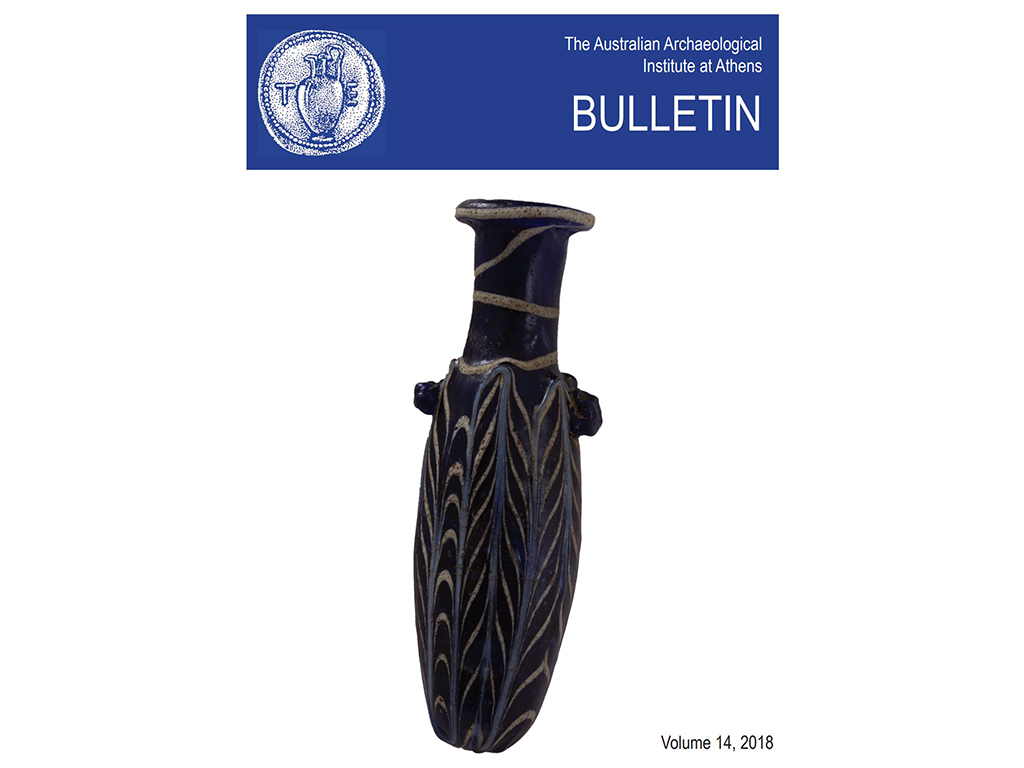
Hopwood, B., “Greek Core-Formed Glass Alabastron: MA2016.18.1,” Bulletin of the Australian Archaeological Institute at Athens, 14 (2018), Cover & 39.
In 2016, to honour the Museum’s founder, this deep blue Greek coreformed glass alabastron was unveiled. Originally in the private collection of Thomas Barlow Walker of Minneapolis (1840–1928), the alabastron has a slender ovoid body, cylindrical neck, and pinched rim. The shoulders sport twin lug handles, and trailings of light blue and white glass have been raked to create a feather pattern. The alabastron both commemorates Maurice Kelly and completes UNEMA’s collection of glass artefacts demonstrating the development of glass working in antiquity from core-formed to free and mould-blown glass.
2017 Report
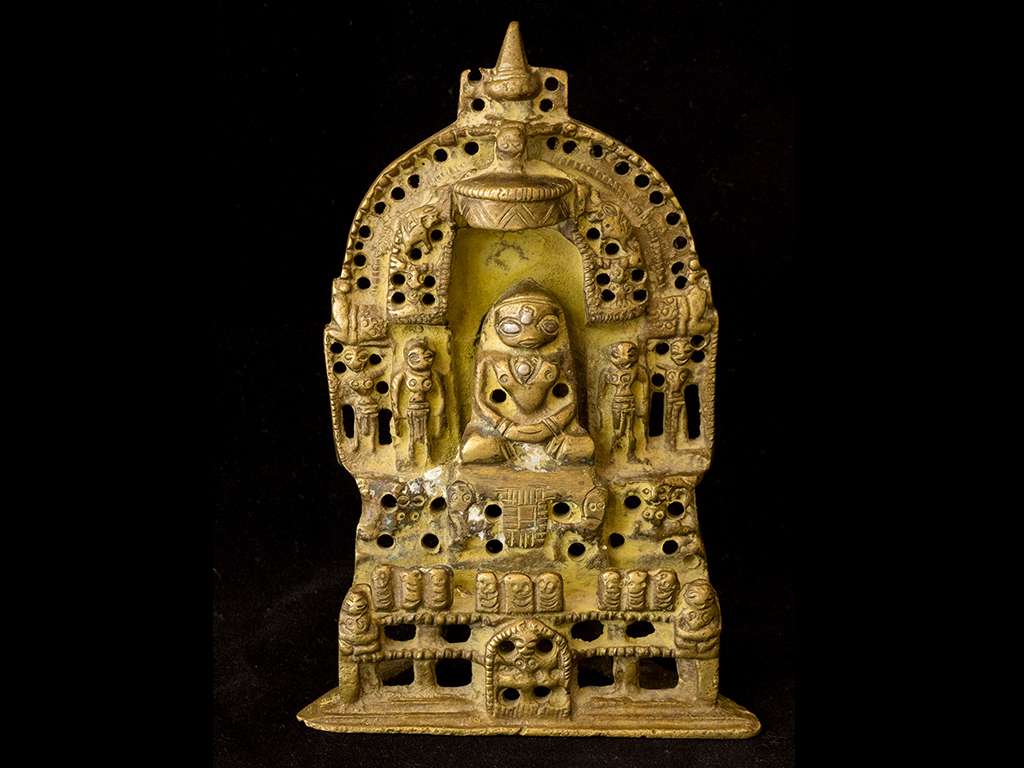
Research+, UNE Research Services, University of New England, Armidale 2017.
This edition of Research+ highlights our engagement with Australia’s place in a much broader region – Asia and Southeast Asia – and the ongoing transnational linkages forged between UNE researchers and their counterparts in a myriad of Asian contexts. 2017 is also the year that marks the 50th anniversary of ASEAN, the Association of Southeast Asian Nations. UNE’s Asia Centre (now the Asia-Pacific Centre) has nurtured many of these linkages since its foundation in 1992, but they extend further than any one School or Centre, and inform the scholarship of scholars from across the diverse disciplines of the University.
2016 Book Chapter
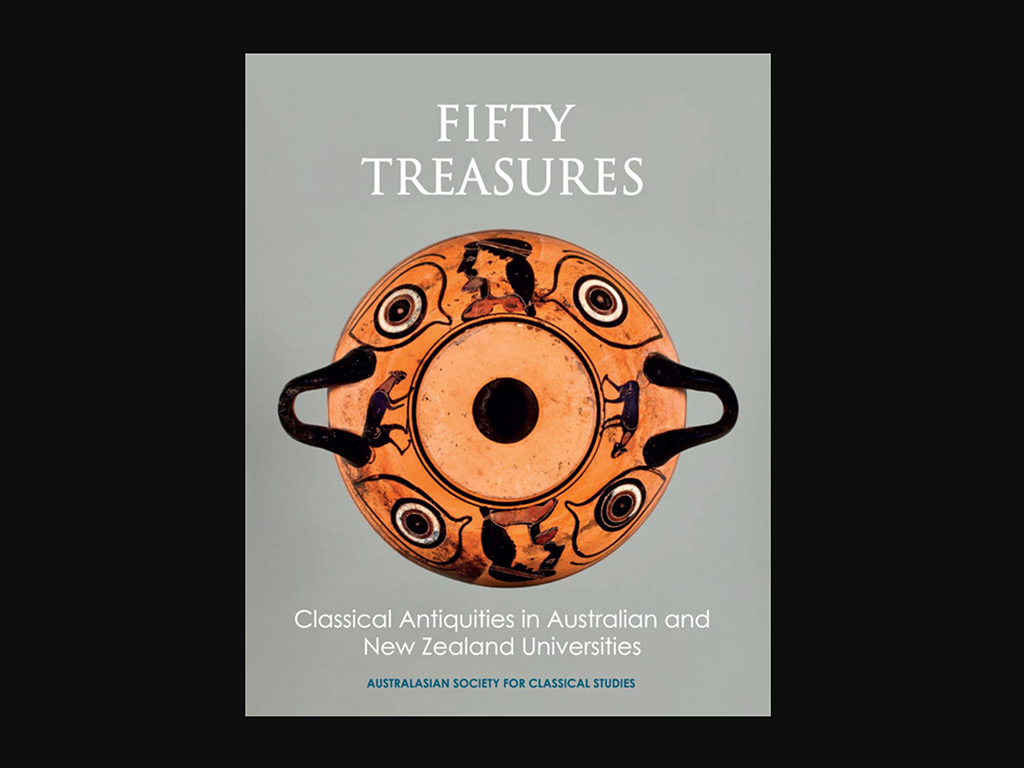
Hopwood, B., “The University of New England Museum of Antiquities,” in Ridley, R.T., with Marshall, B. and Morrell, K., eds., Fifty Treasures: Classical Antiquities in Australian and New Zealand Universities, Australasian Society for Classical Studies, Melbourne 2016, 63-73.
The year 2016 marks the fiftieth anniversary of the founding of the Australian Society for Classical Studies, changed to the Australasian Society for Classical Studies in 2003-4, when New Zealand campuses were officially incorporated. This volume has been published to mark that occasion. It contains a catalogue of fifty of the finest and most significant artefacts, one for each year of the Society’s existence, in more than a dozen museums and collections of antiquities in the two countries.
2015 Activity Sheet
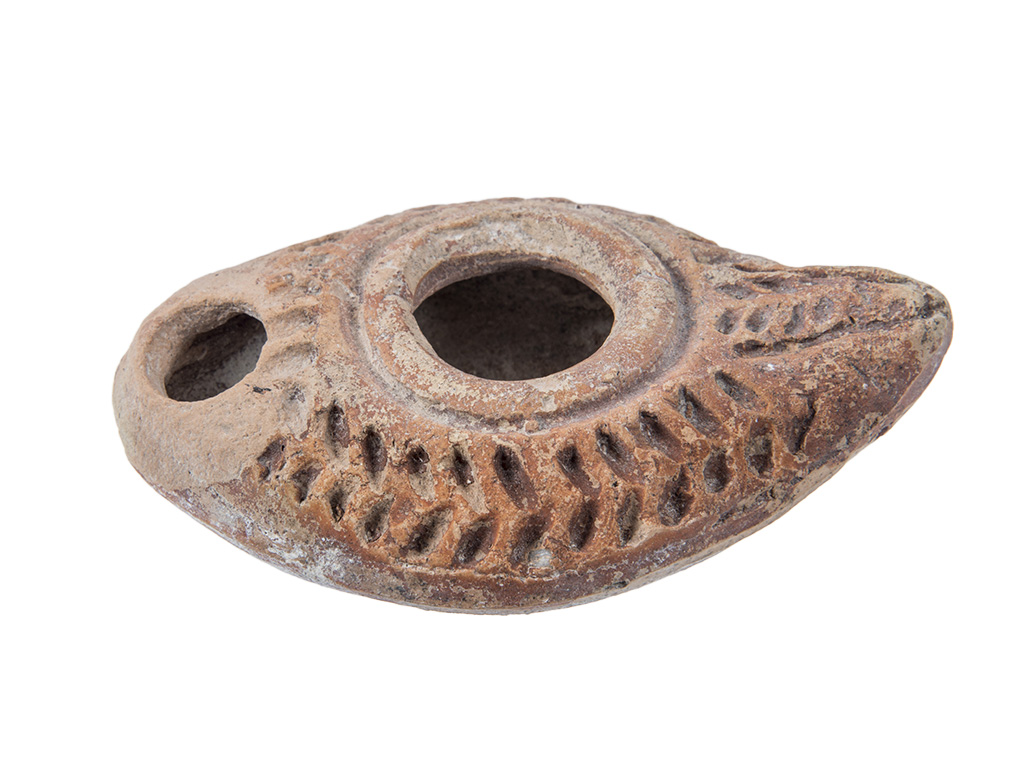
Hopwood, B., Hidden Treasures at the UNE Museum of Antiquities (UNEMA), University of New England, Armidale 2015.
A cryptic clue treasure hunt designed for ages 10+ yrs. This activity uses riddles and puns to challenge and provoke visitors to identify a diverse range of objects on display. The clues may hint at the form, function, or cultural resonance of the artefacts, and encourage visitors to think about how and what we know about the artefacts in UNEMA’s collections.
2015 Activity Sheet
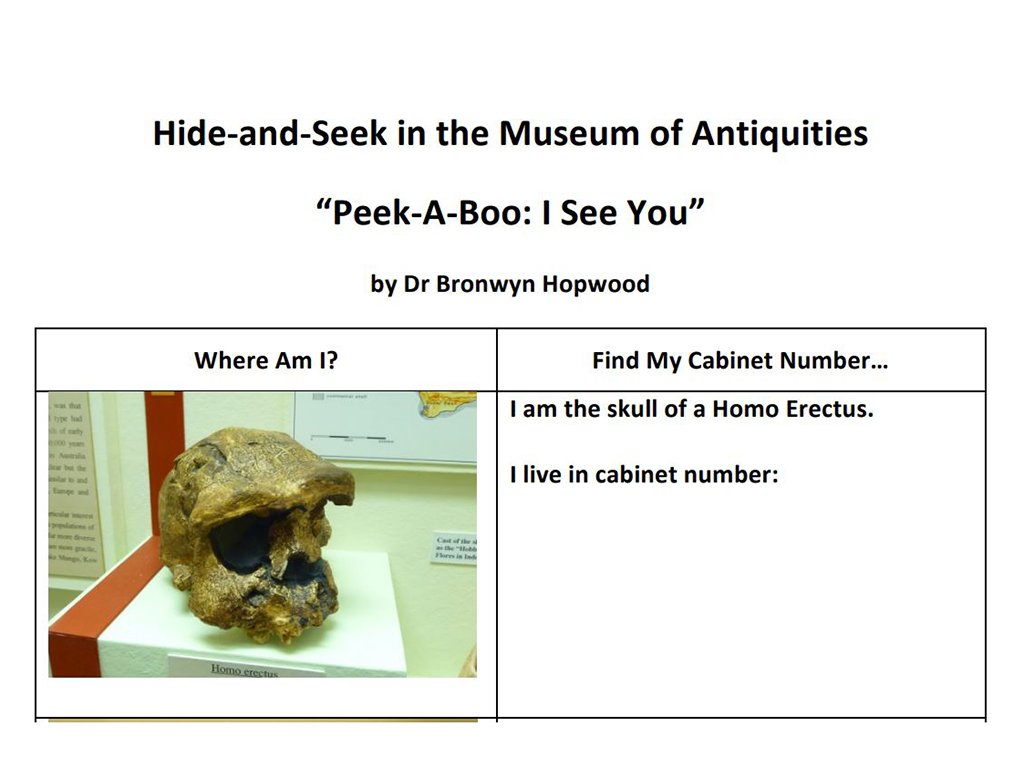
Hopwood, B., “Peek-a-Boo: I See You” : a hide-and-seek activity book in the UNE Museum of Antiquities (UNEMA), University of New England, Armidale 2015.
An activity sheet that helps young visitors engage with UNEMA’s displays. Designed for Ages 5+ yrs, the activity identifies key items across all of the Museum’s collections and challenges visitors to find those items in the displays. The challenge is effective in helping visitors to really look at what’s on display, to increase their skills of observation, and the amount of time they spend engaging with the displays.
1988 Book Chapter
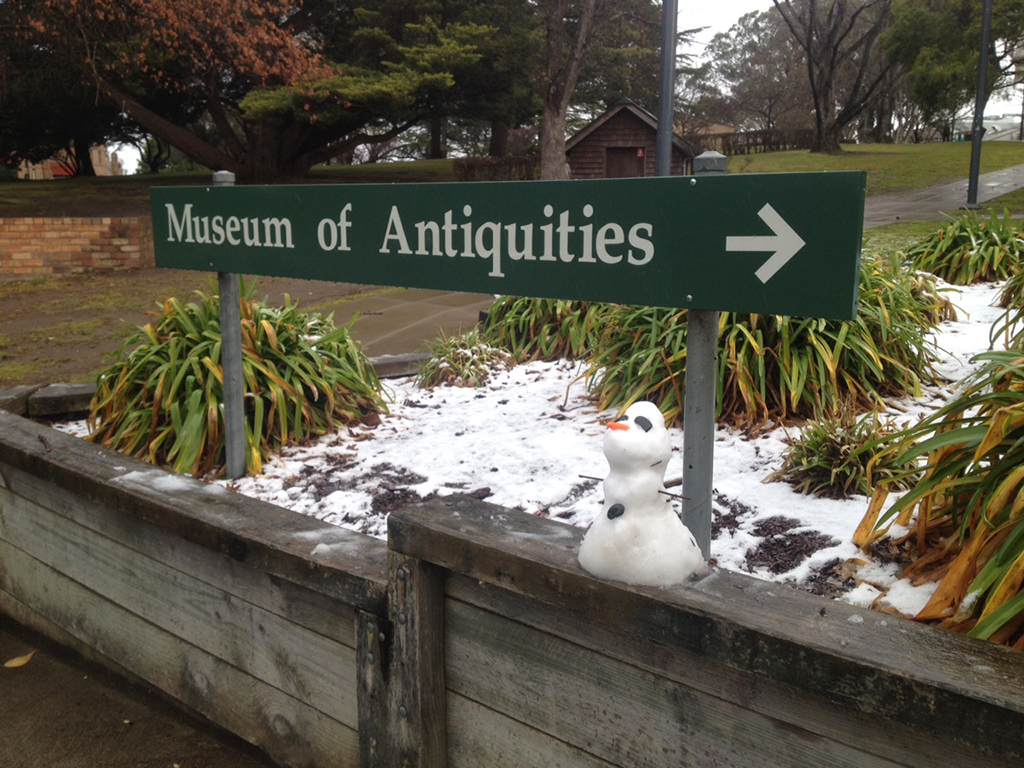
Horsley, G.H.R., “From Classics Museum to Museum of Antiquities: tracing some trajectories,” in Ryan, J., ed., “The Arts from New England University Provision and Outreach 1928 to 1998,” Faculty of Arts and UNE Alumni, University of New England, Armidale 1998, 301-311.
After the Nicholson Museum at the University of Sydney, which houses the finest collection of antiquities held anywhere in the nation, the Museum established in 1959 at the University of New England within the Department of Classics was the second such Museum established in any University in New South Wales…In contrast to the significant philanthropy of one individual, the Museum at Armidale has grown thanks to university purchases made mainly in its first two decades, and to the donations of a few items each by many people. Far too little is known about the Museum of Antiquities even by those within the University community; and yet it is noteworthy for its range of material, and also for the cultural contribution it already makes to the entire New England region. Several changes have occurred during its existence, and these trajectories will be charted here.
1993 Journal Article
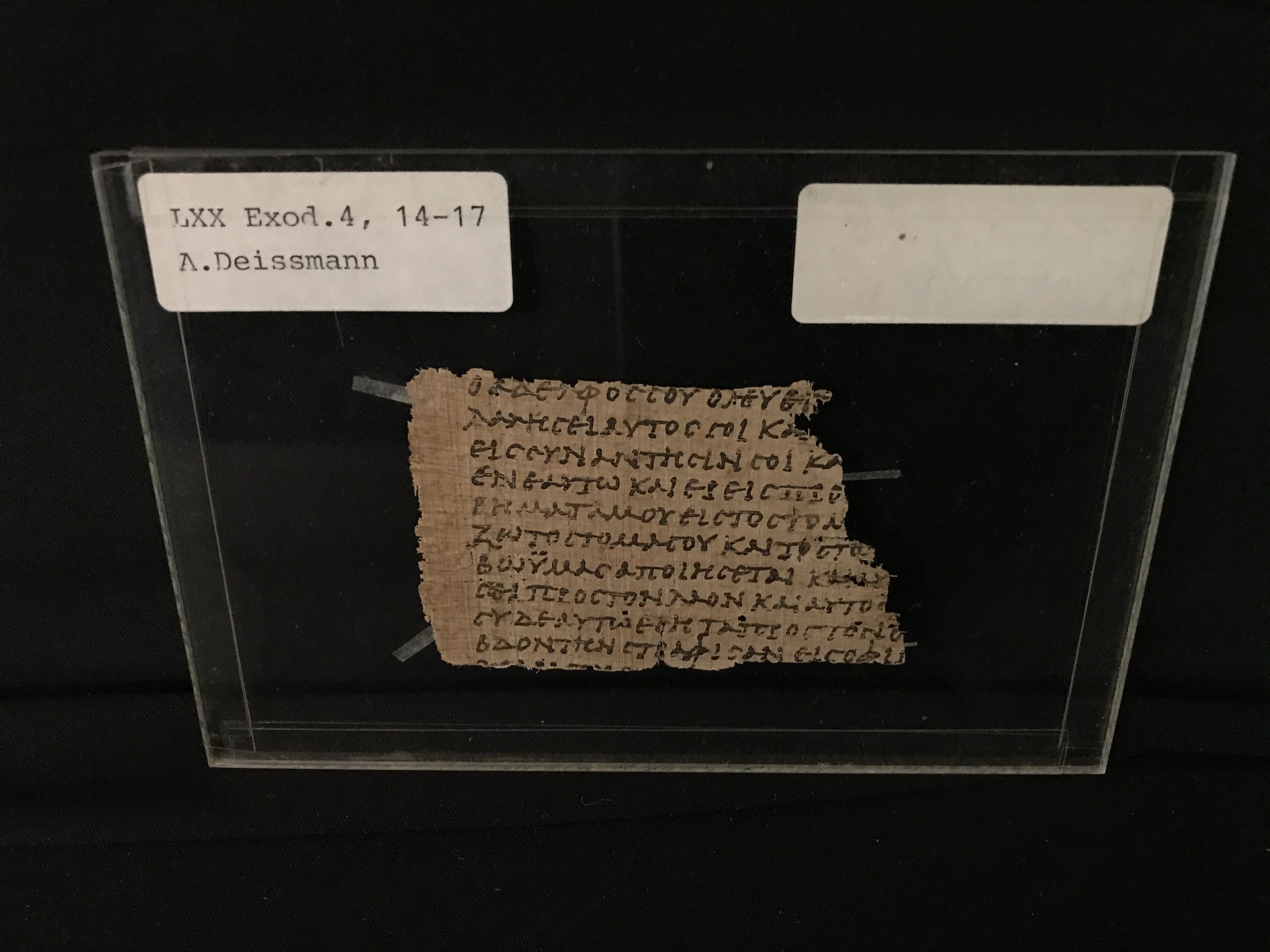
Horsley, G.H.R., “An Unpublished Septuaginta Papyrus from the Nachlass of Adolf Deissmann With Plates 14-15,” Archiv für Papyrusforschung 39, 1993, 25-29.
The papyrus published here was owned by Professor Adolf Deissmann (1866-1937), and was saved in the Spring of 1945 along with only a small number of items from his library in Haus Anatolia, the villa at Wiinsdorf (c.40 km. south of Berlin) to which he had retired in 1934. When I met Dr Gerhard Deissmann, his sole surviving child, in Bremen in November 1991 — a meeting which coincided with the 125th anniversary of his father's birth on 7 November 1866 — he entrusted this text to me to publish. I am delighted to acknowledge his generosity to me in this and other matters. The original is now in the UNE Museum of Antiquities (UNEMA), Armidale.

